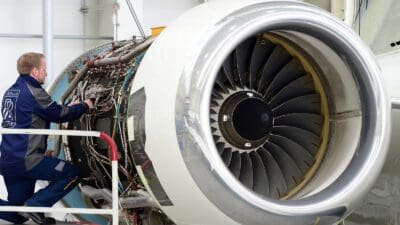Saga (LSE: SAGA) shares have lost 75% in two years. But since a bottom on 9 September, we’ve seen a 17% recovery. And how low does a stock’s valuation have to go before it becomes an irresistible buy?
On fundamentals, Saga shares look cheap. Analysts are expecting an earnings crash this year, but that still leaves a forward P/E of only six. Perhaps there had there been further falls on the cards but, at the moment, predictions suggest that’s as bad as things should get.
Fat dividend
And there’s a forecast 8.5% dividend yield, twice covered by forecast earnings. That wouldn’t look so good if it was under threat. But we’ve already had a big cut after the January payment was slashed by 56% as part of the company’s liquidity improvement plans.
So, unless we expect the dividend cut won’t be sufficient and there’ll be more to come, or that future earnings won’t be there and good enough to cover dividends, the shares are a serious buy, yes?
Well, I don’t think those questions are easy to answer right now. It all depends on the future validity of Saga’s business model, which is traditionally aimed at the over-50s looking for the full package.
I confess that, while I’m very much in Saga’s target age group, I’m definitely not part of their target market. I’ve done a lot of traveling, but I’ve never been on a package holiday in my life.
But, with the increasing ease with which we can book flights, accommodation, transfers, insurance and whatever else we need at the super-competitive prices offered by the internet, there’s surely less and less need to pay someone a premium to put together an all-in-one package.
Change of strategy
But, as my colleague Rupert Hargreaves has pointed out, Saga has been taking steps to address the two crucial aspects of its business model.
Firstly, its insurance offerings were just not competitive, and reliance on customer loyalty doesn’t work when we have rotund opera singers and meerkats on hand to show us who’s offering the best services and prices. To that end, Saga is revamping its insurance products, and things like a new three-year, fixed-price insurance deal do appear to offer attractive differentiation.
Differentiation is the key, and Saga is also moving upmarket in its holiday package offer. Anyone can put together a run-of-the-mill combination of flight and hotel, but moving into the luxury world of escorted tours and things like increasingly popular river cruises, could help attract customers back while also providing higher margins.
The elephant
But, while I’m upbeat about Saga’s turnaround strategy, I can’t ignore the enormous elephant in the room, its debt. At the interim stage at 31 July, net debt stood at £642.9m, which is more than the company’s entire market-cap of £533m. Suddenly, that P/E of six doesn’t look so attractive.
I do think Saga is tempting for its dividends, and I reckon there’s a high probability they’ll be maintained. But for me, there are plenty of other big dividends out there that come without the massive debt burden and its associated risk.







